Go to about.usps.com/resources/postal-bulletin.htm to browse past issues.
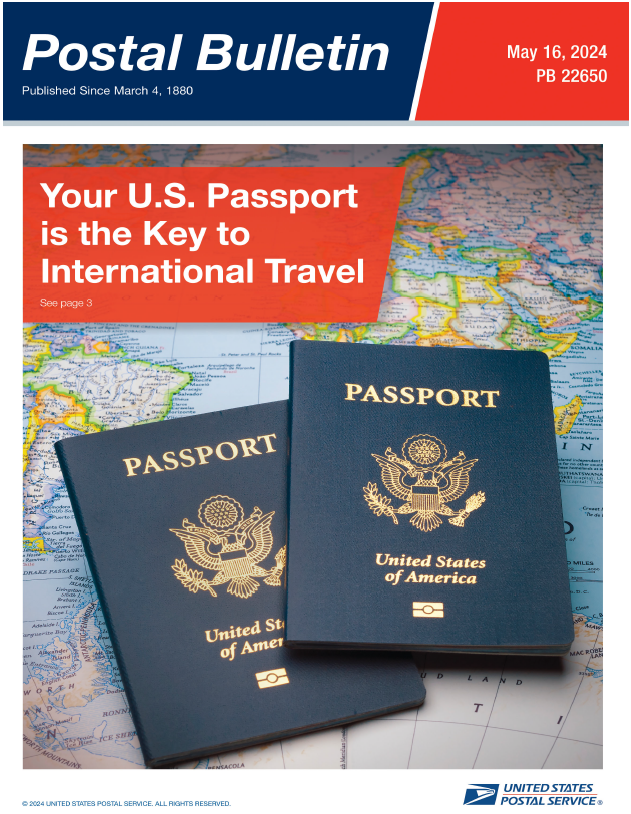
Read interesting facts about the United States Postal Service.
BULLETIN
On time. Every time. The Postal Bulletin, a nationally distributed biweekly publication, serves as a source for official policy, procedure updates and departmental news for all Postal Service functions. It has never missed a deadline since its inception in 1880.
Go to about.usps.com/resources/postal-bulletin.htm to browse past issues.

ZIP
Mr. ZIP, who has no first name, appeared in many public service announcements and advertisements urging customers to use their five-digit ZIP Code introduced on July 1, 1963. Within four years of his appearance, eight out of 10 Americans knew who Mr. ZIP was and what he stood for. The character has found new life in recent years a USPS-licensed character and even has YouTube series.
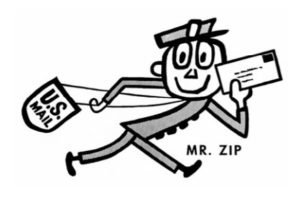
With the introduction of the nine-digit ZIP Code, or ZIP+4, in 1983, Mr. ZIP went into partial retirement. His image still was printed on the selvage of some sheets of stamps, but that practice ended in January 1986. Today, Mr. ZIP is a USPS-licensed character used to expand the Postal Service brand and introduce the organization to new generations of Americans.
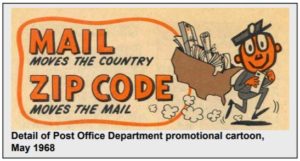
the postal dog
On an autumn day in 1888, a shaggy pup took his first steps toward becoming a postal legend when he crept into the Albany, NY, Post Office. Postal employees allowed him to stay and named him Owney.
At first, Owney stayed close to the Post Office, but he soon began riding mail wagons to the train depot and then rode the railway mail car down to New York City and back to Albany. As Owney traveled farther, his friends at the Albany Post Office feared he might wander too far away to find his way home again, so they purchased a leather collar with a tag reading “Owney, Post Office, Albany, N.Y.” Railway mail clerks recorded Owney’s travels by attaching metal baggage tags to his collar to identify the rail lines he traveled on. He was soon weighed down by his collection of tags, so Postmaster General John Wanamaker presented Owney with a little jacket to distribute their weight more evenly.
Owney took to traveling farther and staying away longer, eventually visiting Mexico, Canada, Japan, China, Singapore, Suez, Algiers and the Azores. While being shown off to an Ohio newspaper reporter, Owney bit the clerk who was handling him. The postmaster had Owney put down on June 11, 1897. Railway mail clerks chipped in money to have a taxidermist preserve Owney’s body, which then was sent to postal headquarters in Washington, DC, for exhibit. In 1911, the Post Office Department entrusted Owney to the Smithsonian Institution. Since 1993, Owney has been part of the National Postal Museum in Washington, DC. In 2011, Owney was honored on a commemorative U.S. postage stamp.


in the Postal Service
Each day the Postal Service picks up, processes and delivers millions of letters and packages. No single operation in the world comes close to this level of connectivity for so many households and businesses.
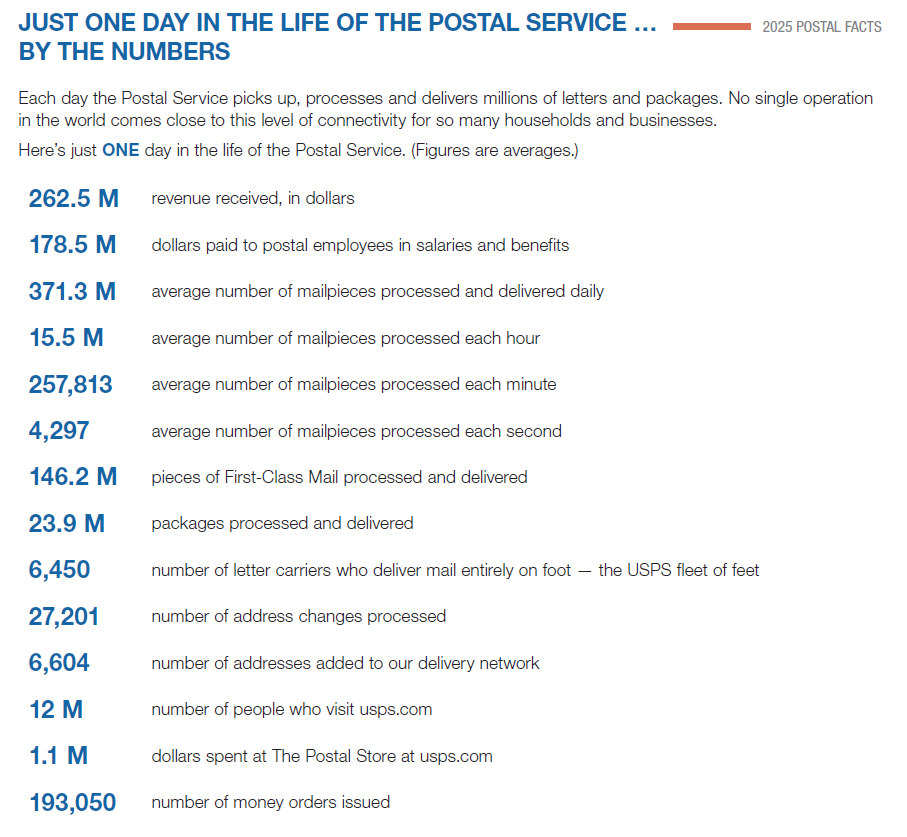
postal employees
Heads of industry. Hollywood legends. Sports heroes. Singers. Painters. Writers. And a couple presidents. All were postal employees before they became household names! Sixteen have even been commemorated with stamps.
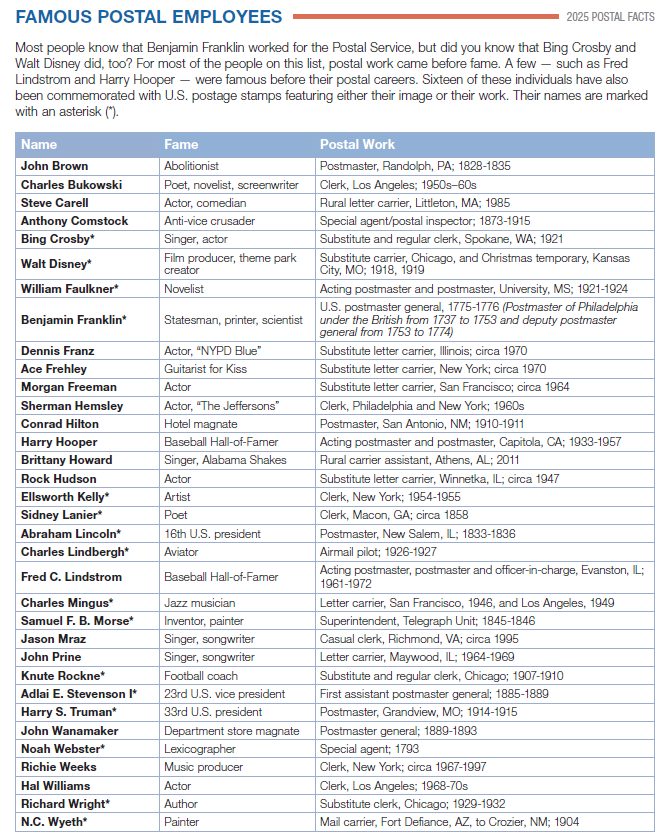
of our domains
The Postal Service owns 1,958 internet domains.
our mark
Leaving a mark! The Postal Service has 414 domestic and 982 foreign trademark registrations.
the best
Patently the best. The United States Patent and Trademark Office has issued more than 700 patents to the Postal Service.

social network
The Postal Service is the original social network, but that doesn't mean we aren't represented on the other, newer social networks. You can find the Postal Service on Facebook, Instagram, LinkedIn, Pinterest, Threads, X and YouTube. We also have a blog and a podcast.
bicycle delivery routes
The Postal Service delivers mail by bicycle on 50 routes in Arizona and Florida, reducing emissions and saving fuel.
in caves
No troglodytes here! The Stamp Fulfillment Services facility, located in Kansas City, MO, is housed in a limestone cave 150 feet beneath the ground. It is the Postal Service’s only facility located underground.
The consistent, year-round temperatures and humidity levels in the cave allow the stamps to be maintained in mint-quality condition. The underground facility also keeps the inventory and employees safe from snow, flooding, winds and tornadic activity common in the Midwest.
Ahoy!
The JW Westcott is a 45-foot contract mail boat out of Detroit that delivers mail to passing ships on the Detroit River. The JW Westcott has its own ZIP Code — 48222.
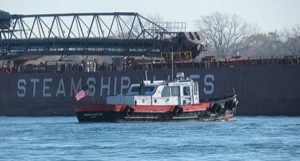
This is the J.W. Westcott II approaching a Canadian freighter on the Detroit River
mail pieces processed daily
The Postal Service processed and delivered an average of 371.3 million mail pieces daily in 2024.
mailman
John Prine, singer and songwriter, was a letter carrier in Maywood, IL, 1964-1969.
unstaffed Post Office
One of a kind. There is a 24-hour, unstaffed, self-service Post Office in Vienna, VA, that allows customers to conduct most shipping and mailing transactions quickly and easily themselves. The self-service Post Office provides round-the-clock accessibility to P.O. Boxes, as well as self-service kiosks and an automated package drop.
delivered by mail
The farm-to-table concept isn’t new. From 1914 to 1920, the farm-to-table program was a novel initiative that allowed farmers to arrange prices with people in urban areas and then mail them fresh meats, eggs, dairy products, produce, honey, jelly and more. This was a way to give farmers more customers and city dwellers greater and cheaper access to fresh goods.
CREATIVE
© is for creative. The Postal Service has more than 500 copyright registrations, many of them to protect artwork on postage stamps.
in continental U.S.
The largest ZIP Code in the continental U.S. is 99734, Prudhoe Bay, AK, which measures 30,683 square miles.
Twenty-four of the top 25 largest ZIP Codes in the country are located in Alaska — ranging from the largest, 99734, at more than 30,000 square miles to 99741 at 7,600 square miles. The 14th spot goes to 89049 in Nevada.
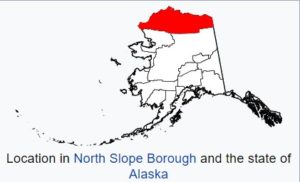
in contiguous U.S.
The largest ZIP Code in the contiguous U.S. is 89049, Tonopah, NV, at 10,821 square miles.
Twenty-four of the top 25 largest ZIP Codes in the country are located in Alaska – ranging from the largest, 99734, at more than 30,000 square miles to 99741 at 7,600 square miles. The 14th spot goes to Nevada, 89049.
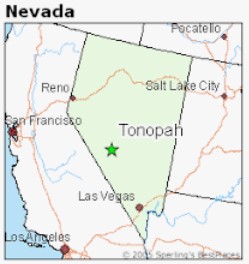
deliver!
The Postal Service moves mail by planes, hovercraft, trains, trucks, cars, boats, ferries, helicopters, subways, bicycles, mules and feet.
JUST NUTS!
Coconuts can be mailed without a box. Simply address the coconut and add your return addresses on the husk, have it weighed for appropriate postage, and it is shipped as-is. Photo: Coconuts ready for mailing at the Molokai, HI, Post Office.

potatoes in the mail
It's SPUDTACULAR! As with coconuts, potatoes can be mailed without a box. Simply write the address it's going to and your return addresses on the spud, have it weighed for appropriate postage, and it can be shipped as-is. Let someone know they are special. Send a tater!

in the mail
Hope in the mail. In 1958, luxury jeweler Harry Winston donated the Hope Diamond to the Smithsonian Institution. With his years of experience in shipping jewelry all over the world, Winston sent the diamond via Registered Mail service with the Post Office Department.

The diamond was placed in a box, wrapped in brown paper, and sent by registered mail from New York in a Railway Post Office train car. In Washington, DC, it was picked up by a mail carrier and driven to the National Museum of Natural History. The price paid for shipping the gem, valued at $1 million at the time, was $145.29, most of that for package insurance.
gold in the mail
Under the watchful security of the Postal Inspection Service, Railway Mail Service clerks transferred some of the $9 billion in gold bullion shipped as Registered Mail from the New York City Assay Office to the depository at Fort Knox, KY, in 1941.
The Inspection Service provided security and management in the cooperative effort between the Post Office Department, local law enforcement, U.S. Army and U.S. Treasury Department.
in the mail??
Do not try to ship your kids! In the early days of Parcel Post service, a few parents managed to mail their children to relatives. In 1913, an 8-month-old baby in Ohio was mailed by his parents to his grandmother, who lived a few miles away. The baby was safely delivered! Regulations were quickly established to prevent any additional mailing of children through the U.S. Mail.

BRICK IN THE MAIL
Individual bricks can be shipped in the U.S. Mail. Get a permanent marker, write the address and your return address, get it weighed and add the postage. Send that special someone a brick of affection.
Just don’t think you can send enough bricks to build a house or, perhaps a bank. Been there. Done that. You can read about the bank of Vernal, UT, here.
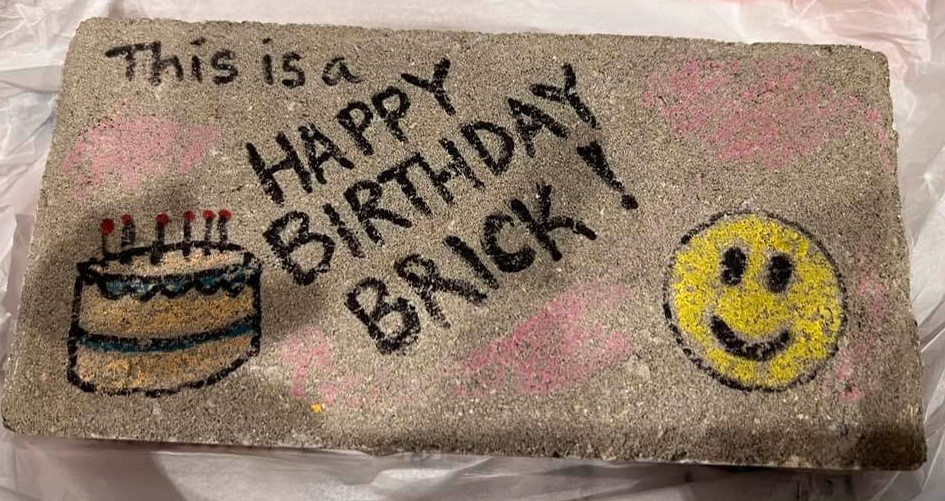
the ZIP Code
The Zoning Improvement Plan (ZIP) Code was launched in 1963 to better process and deliver increasing volumes of U.S. Mail. The first number in the five-digit ZIP Code represents a general geographic area of the nation, “0” in the east, moving to “9” in the west. The next two numbers represent regional areas, and the final two identify specific Post Offices. In 1983, the ZIP+4 Code was introduced.
Decoding the code. In 1983, the ZIP+4 Code was introduced. The extra four numbers enable mail to be sorted to a specific street. In 1991, two more numbers were added so that mail could be sorted directly to a residence or business. Today, the use of the ZIP Code extends far beyond the mailing industry, including being a fundamental component in the nation’s 911 emergency system.
There are 41,552 ZIP Codes in the country. They range from 00501, belonging to the Internal Revenue Service in Holtsville, NY, to 99950 in Ketchikan, AK. Easiest to remember? How about 12345, a unique ZIP Code for General Electric in Schenectady, NY.
Mr. ZIP helped promote the new ZIP Code concept in 1963.
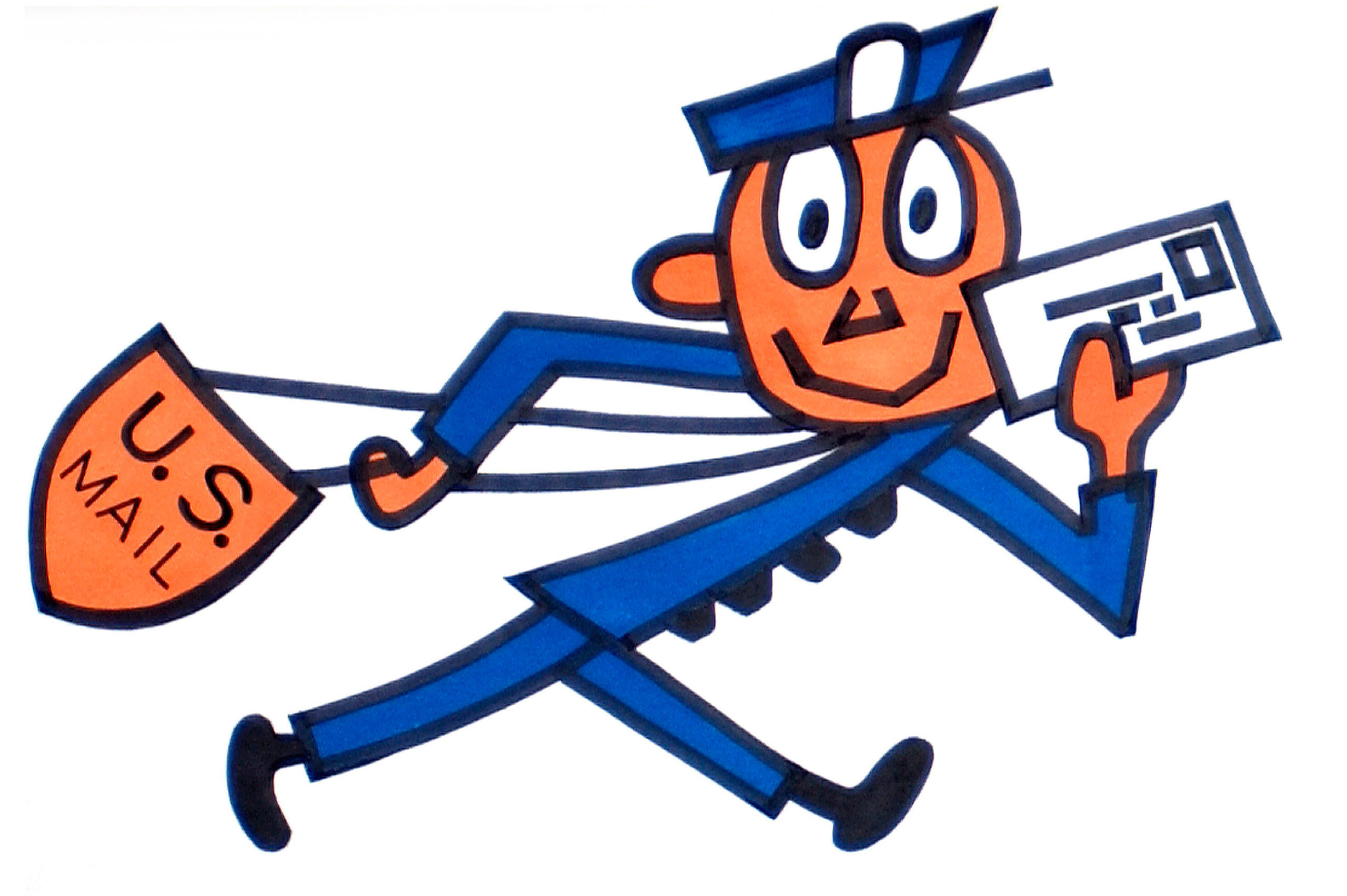
PO made of straw
In Corrales, NM, in 1999, a new Post Office was built with more than 900 bales of straw as insulation. The Post Office is still standing strong and saving energy — a proud testament to the Postal Service’s longstanding history of sustainable practices.
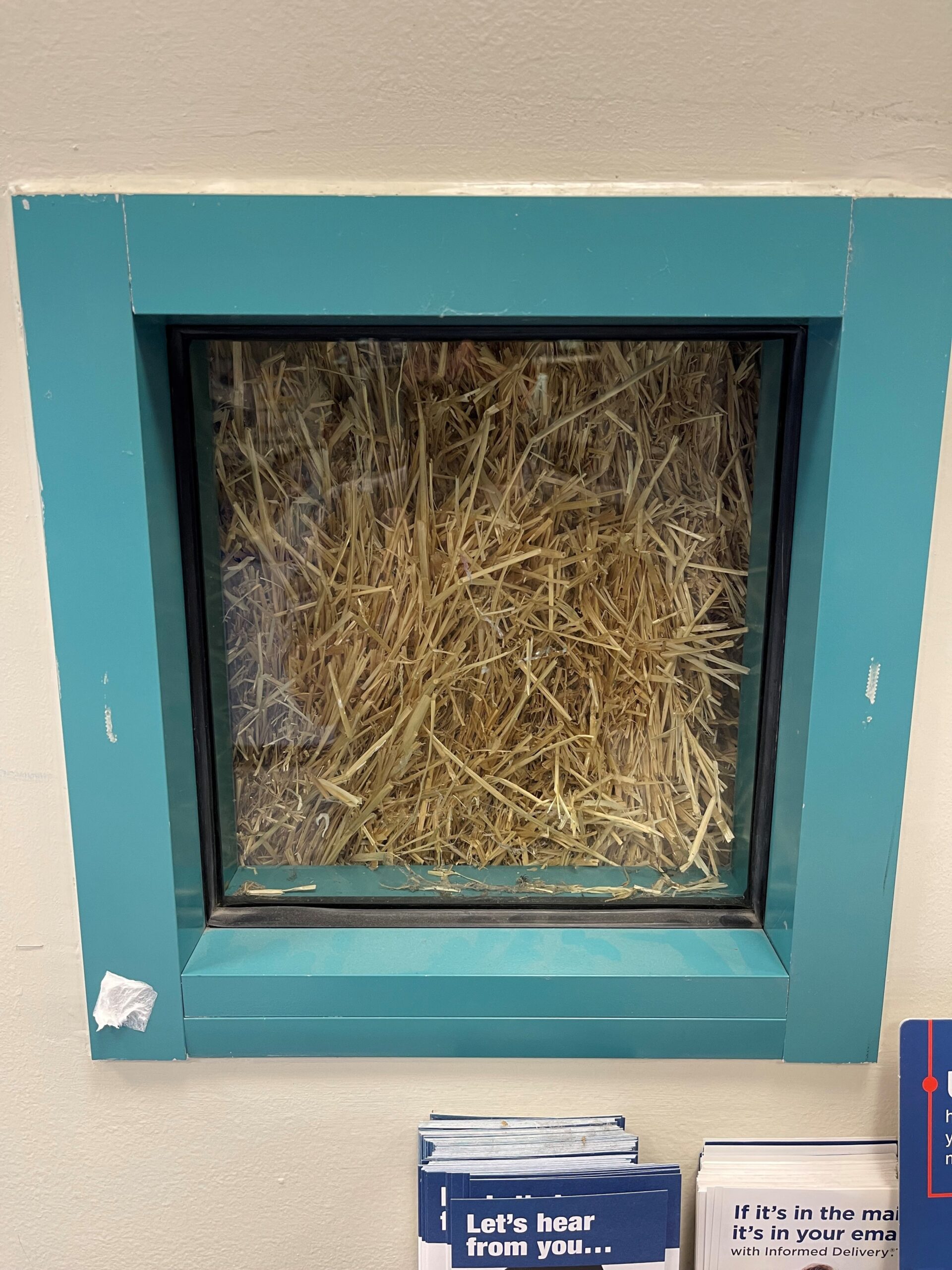
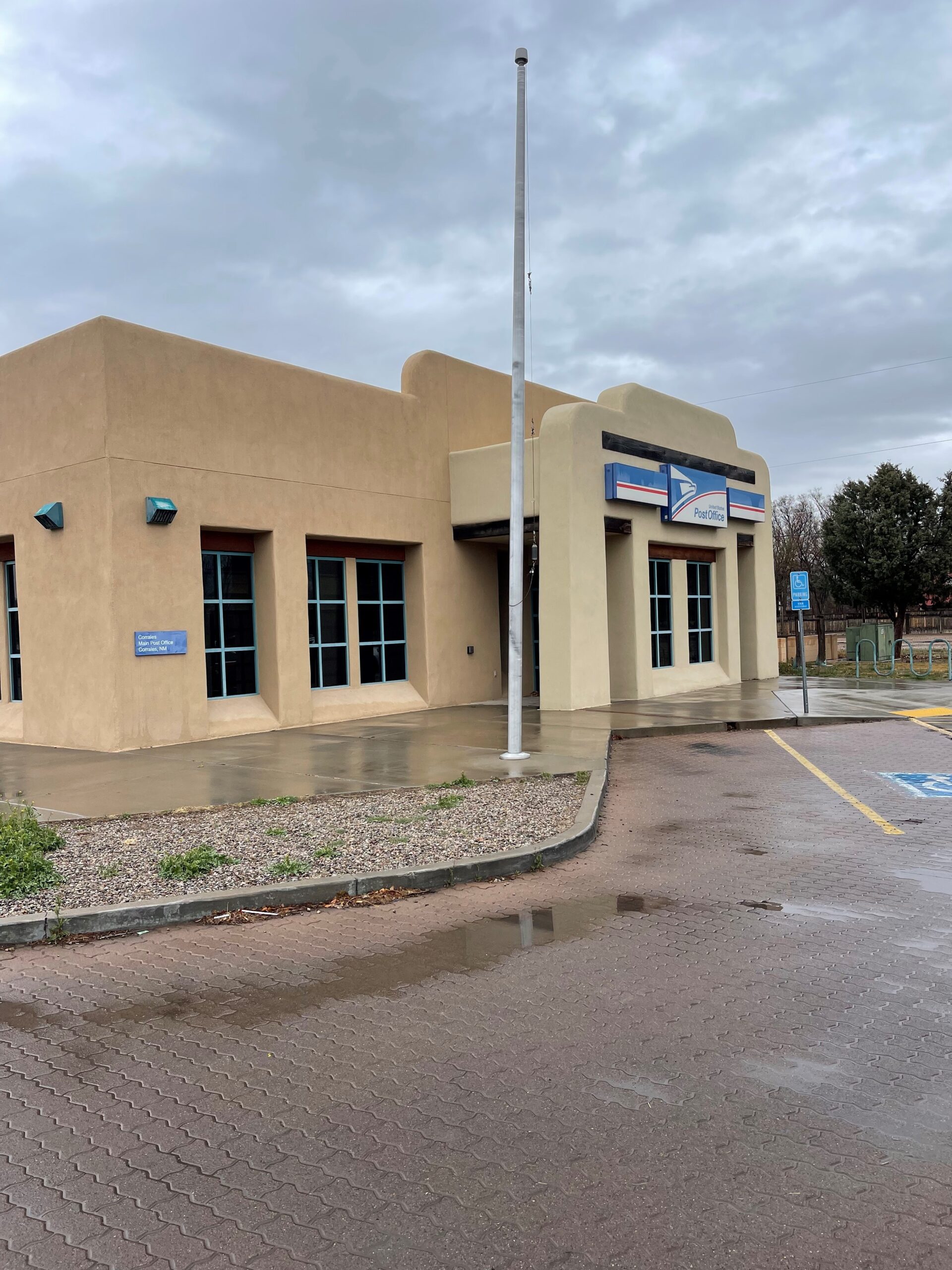
Corrales NM Post Office
We can still read it!
Chicken scratch. The Postal Service has an entire operation dedicated to deciphering poor penmanship.
Letter mail at a processing plant that cannot be read by the automated equipment has an image taken and transmitted to the Remote Encoding Center (REC). At the REC, employees look at the image and type in address information. The information is matched up with a valid address, the data is transmitted back to the equipment at the plant, and a barcode is printed on the letter. That barcode can be read by any letter processing machine in the Postal Service, keeping the letter within the automated stream of mail in the postal network.
Post Office
This Post Office floats! The Halibut Cove Post Office (99603) in Homer, AK, floats. The office is a small houseboat that is permanently tied to a dock.
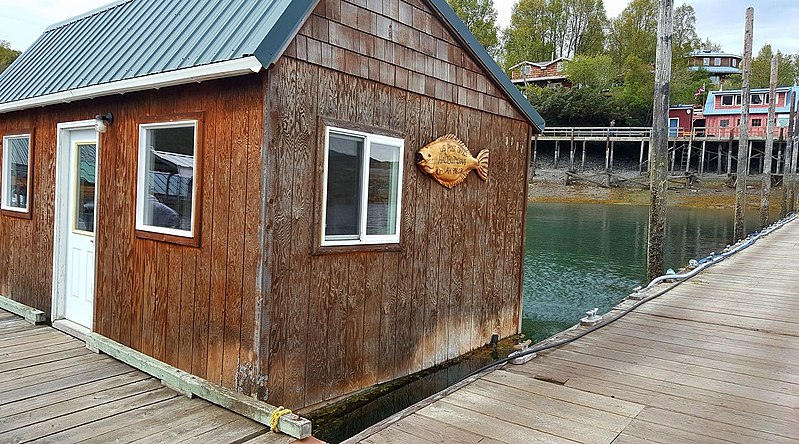
Flies Here
No high-flying flag here. The B. Free Franklin Post Office in Philadelphia is the only Post Office in the country that doesn’t fly the American flag — because in 1775 when Benjamin Franklin was appointed postmaster general, there was no flag.
Franklin used to own the building and there is a small museum on the second floor.
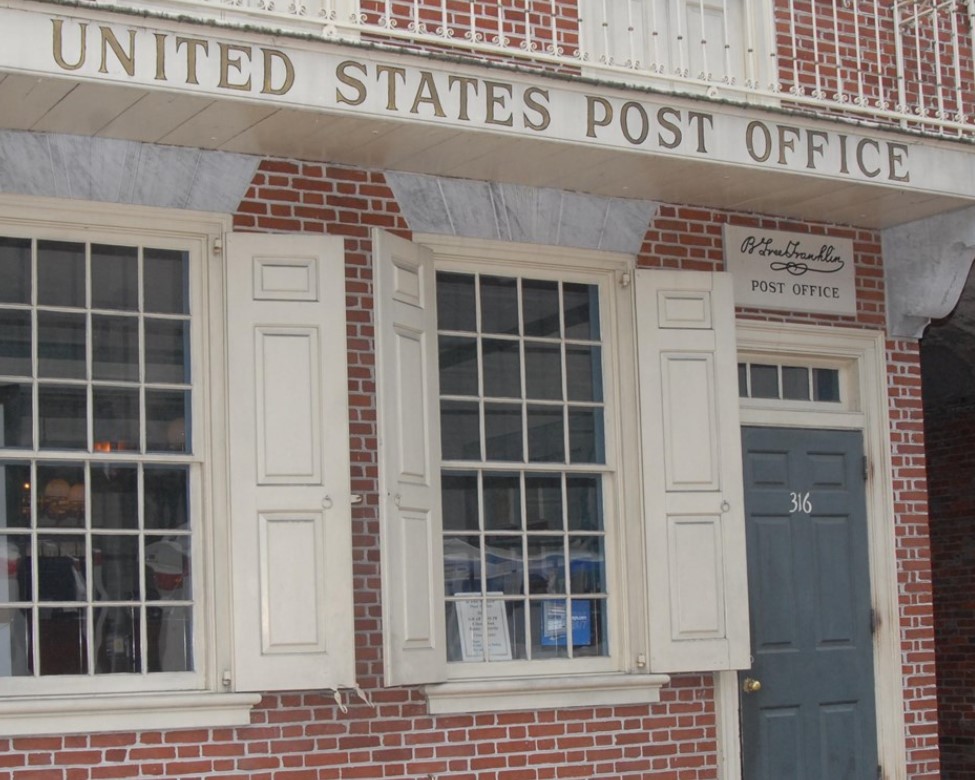
rubber bands
Boing! The Postal Service ordered more than 491 million rubber bands in 2024, which totals 27,152 miles of material, or one trip around the world.

blue collection boxes
Iconically ours. There are approximately 124,000 iconic blue collection boxes in use on street corners across the nation.
About those iconic blue boxes…
They weren’t always blue. Before 1970, they were green, then red, then white, then green again, and finally — beginning in 1955 — red, white and blue.
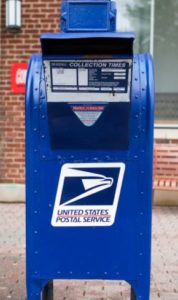
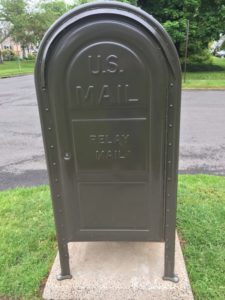
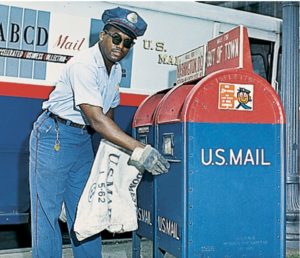
addresses added daily
The Postal Service added an average of 6,604 addresses to its delivery network every day in 2024.
mailpieces processed daily
On average, the Postal Service processed and delivered 146.2 million pieces of First-Class Mail each day in 2024.
pieces processed each hour
On average, the Postal Service processed 371.3 million mailpieces each day, 15.5 million each hour, 257,813 each minute and 4,297 each second in 2024.
371.3 M — number of mail pieces processed and delivered each day
15.5 M — average number of mail pieces processed each hour
257,813 — average number of mail pieces processed each minute
4,297 — average number of mail pieces processed each second
rubber bands
Boing! The Postal Service ordered more than 491.7 million rubber bands in 2024, which totals 27,152 miles of material, or one trip around the world.

postage stamp
Out of this world! A postage stamp was inside the New Horizons spacecraft that made a flyby of Pluto in July 2015. That’s the farthest distance traveled by a postage stamp — more than 3 billion miles, as noted by Guinness World Records.
The “Pluto: Not Yet Explored” 29-cent stamp was part of a set of solar system stamps that were issued in 1991.
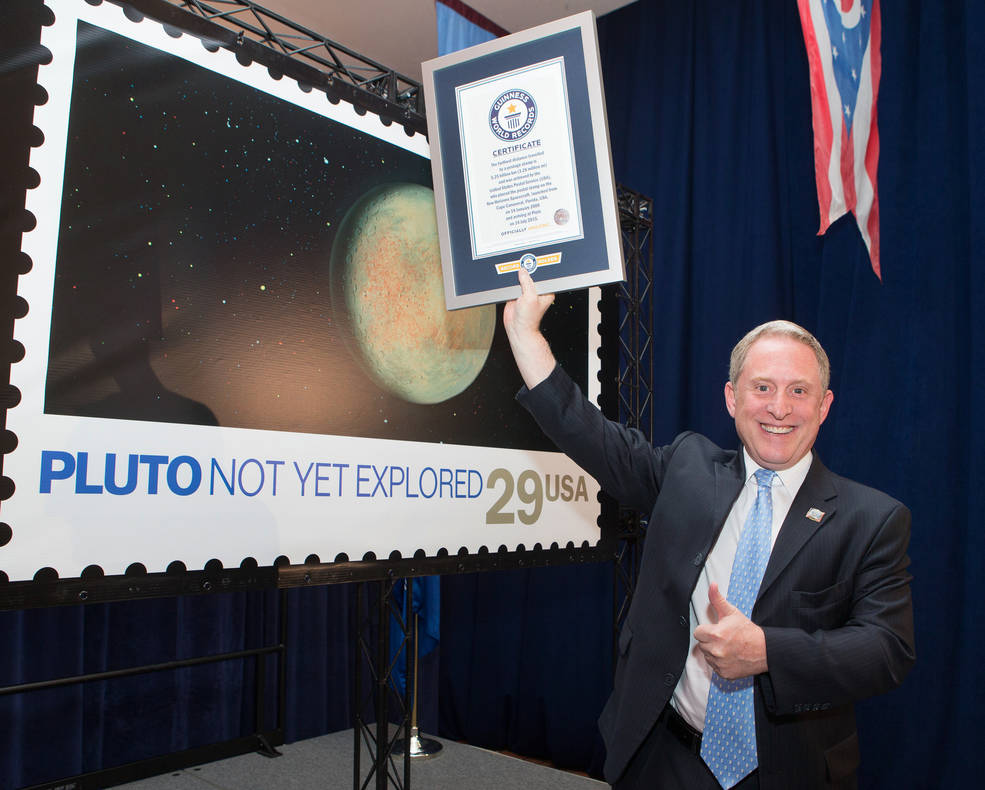
that motto
The U.S. Postal Service has no official motto. Nope, it’s not this phrase: “Neither snow nor rain nor heat nor gloom of night stays these couriers from the swift completion of their appointed rounds.” But we certainly appreciate the sentiment.
About that motto…
Those words are engraved on the front of the James A. Farley Post Office in New York City, set in stone by the architectural firm that built it. The phrase is taken from an ancient book by the Greek historian Herodotus and refers to messengers in the Persian Empire.
The phrase comes from book 8, paragraph 98, of The Persian Wars by Herodotus, a Greek historian. During the wars between the Greeks and Persians (500-449 B.C.), the Persians operated a system of mounted postal couriers who served with great fidelity.
The popular belief that Herodotus’s description of the Persian postal service is about the U.S. Postal Service is a tribute to the hundreds of thousands of men and women who have delivered the mail reliably and dependably, through all conditions, for centuries.
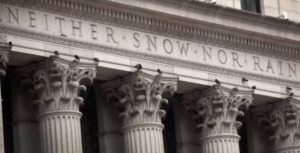
delivery
The most unusual mode of delivery used by the Postal Service is the mule train. Since the 1930s, mules have been carrying mail and goods to the Havasupai people inside the Grand Canyon.
Got mules? The most unusual mode of delivery
used by the Postal Service is the mule train. Since the
1930s, mules have been carrying mail and goods to the
Havasupai people inside the Grand Canyon.
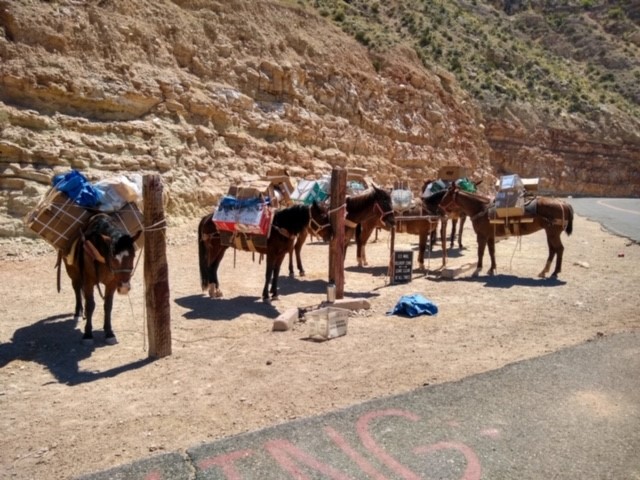
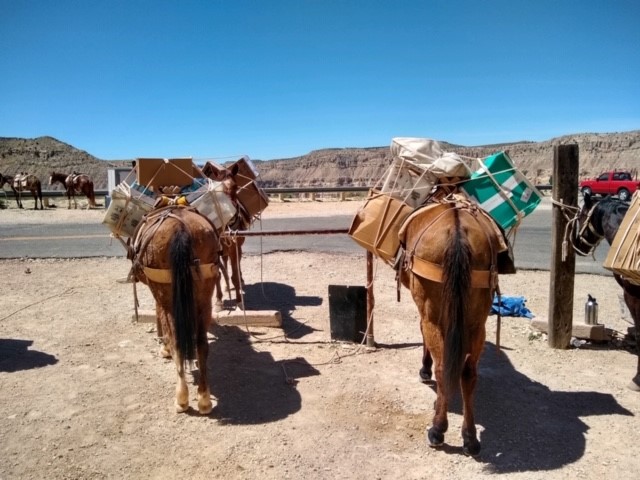
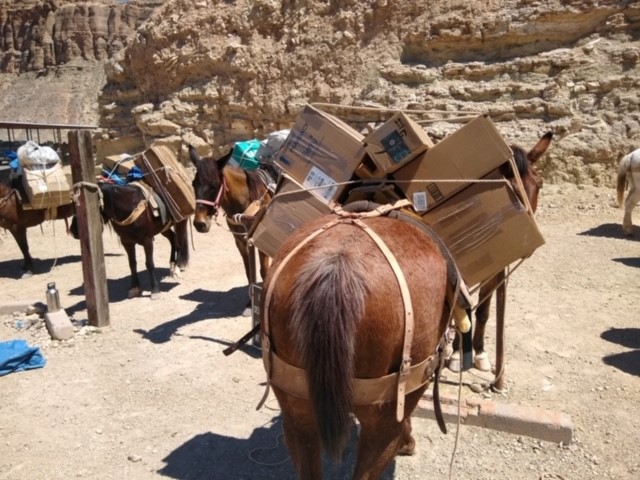
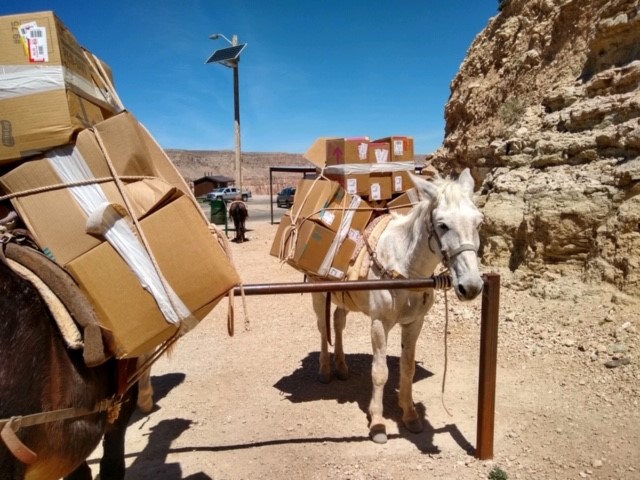
city names
Ben, this one’s for you. There are 32 cities named “Franklin,” making it the most common city name. “Arlington,” “Clinton,” Springfield” and “Washington” are tied for second place at 29 locations each, while “Fairfield” and “Madison” tie for seventh place with 28 locations apiece. The most common Post Office name is “Clinton,” with 26 locations, followed by “Madison” at second (25) while “Franklin” and “Washington” are tied for third (24).
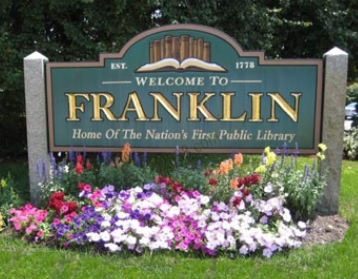
Main Street
The longest Main Street in the country is located in Island Park, ID, and is 33 miles long.
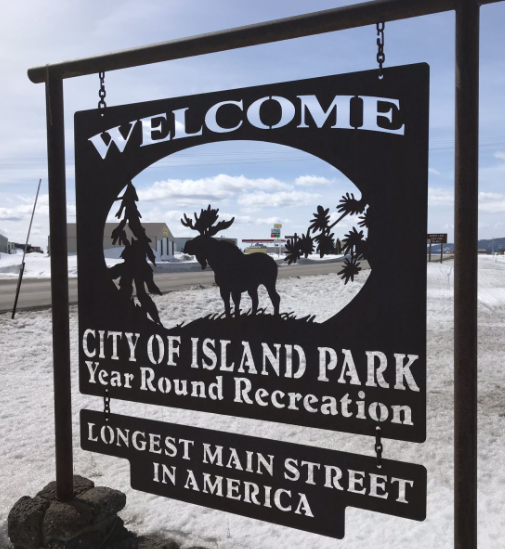
Main streets
The most common street name in the country is “Main” — 21,688 of them — followed by “Second” with 18,322, “Third” with 16,951 and “First” with 16,197.
ZIP Codes
There are 41,552 ZIP Codes in the country. They range from 00501, belonging to the Internal Revenue Service in Holtsville, NY, to 99950 in Ketchikan, AK. The easiest ZIP Code to remember? How about 12345, a unique ZIP Code for General Electric in Schenectady, NY.
Quick! What’s that ZIP Code?
The Zoning Improvement Plan (ZIP) Code was launched in 1963 to better process and deliver increasing volumes of U.S. Mail. The first number in the five-digit ZIP Code represents a general geographic area of the nation, “0” in the east, moving
to “9” in the west. The next two numbers represent regional areas, and the final two identify specific Post Offices. In 1983, the ZIP+4 Code was introduced.
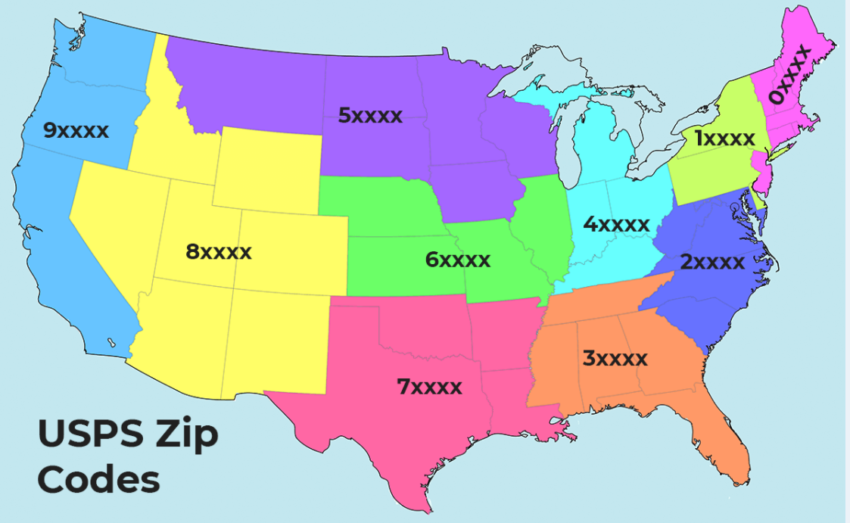
miles traveled
Stellar performance! During 2023, Postal Service employees traveled more than 1.2 billion miles to deliver your mail, equivalent to 48,191 laps around Earth, 5,023 trips to the moon or 13 trips to the sun.
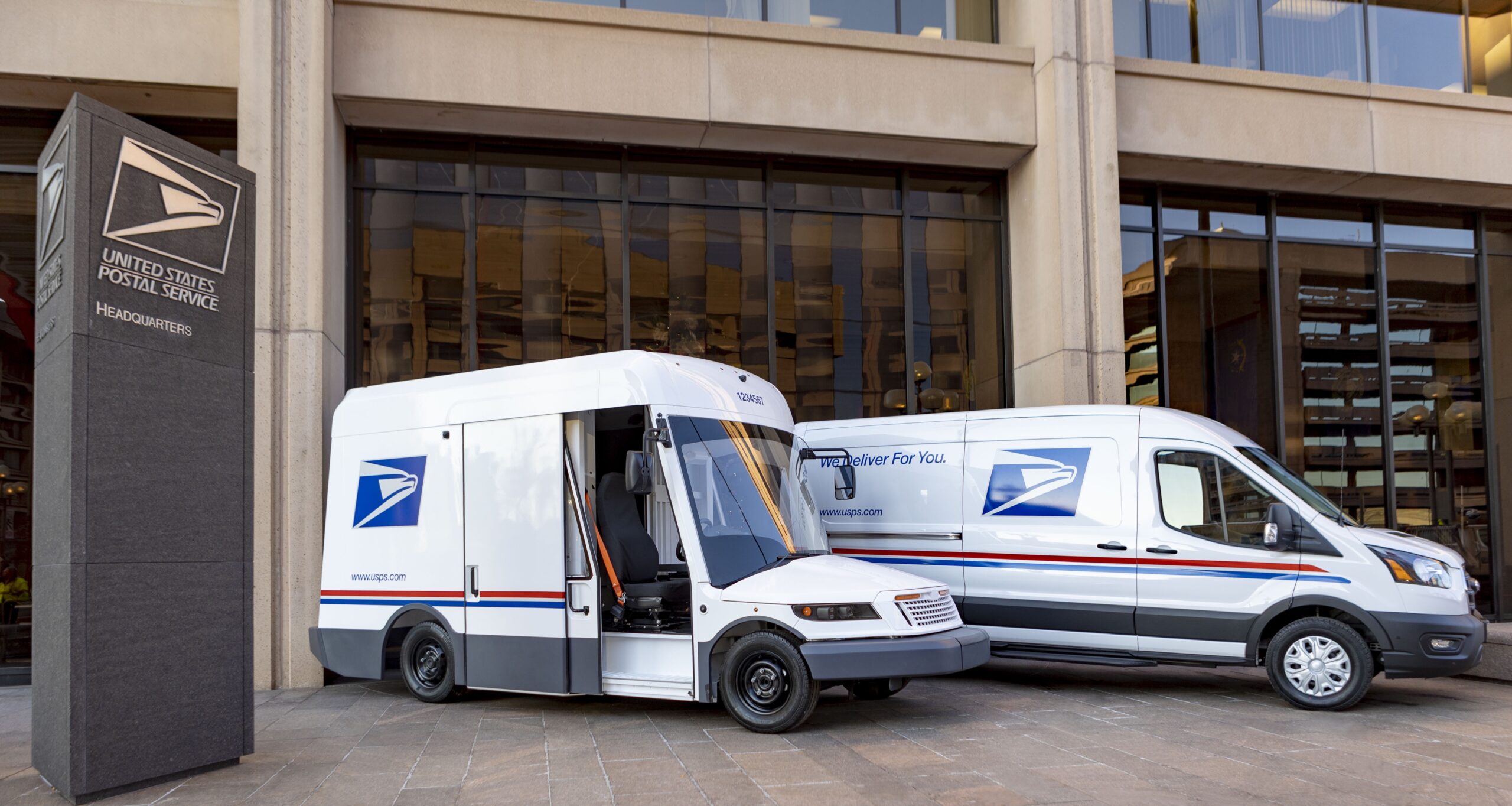
deliveries from one office
The Post Office location with the most possible street deliveries is Heritage Station in San Antonio, TX (78245, 78250, 78251, 78253) — with 116,628 deliveries.
Post Office
Our Post Office in Utqiagvik, North Slope of Alaska — formerly Barrow (99723) — experiences the coldest temperatures.
delivery route
The shortest delivery route is rural route 012 in Woodinville, WA (98072). On this route, the carrier travels 2.45 miles and delivers to 1,147 boxes.
delivery route
The longest delivery route is rural route 001 in Sidney, MT (59270) — 195.2 miles daily, delivering to 305 boxes.
easiest to remember
The easiest to remember ZIP Code is 12345, a unique ZIP Code for General Electric in Schenectady, NY.
ZIP Code
The highest numbered ZIP Code is 99950 in Ketchikan, AK.
ZIP Code number
The lowest ZIP Code number is 00501, unique for the Internal Revenue Service in Holtsville, NY.
Who's there?
The Postal Service’s only dock-to-dock delivery route is on the Magnolia River in Alabama. A 15-foot contract mail boat delivers to 176 dock-side mailboxes on a 31-mile stretch of the river.
most needing a bridge
The Post Office in most need of a bridge is in Point Roberts, WA. It can be reached by car only by driving through British Columbia, Canada. Only a boat or float plane can travel directly there.
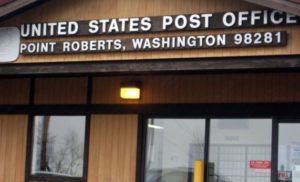
Post Office
The second oldest Post Office location in operations is in Castine, ME, and opened in 1833.
Post Office
The Hinsdale, NH, Post Office (03451) has been located in the same building since 1816.
retail space
The largest U.S. Postal Service retail space is the James A. Farley Post Office in New York, NY (10001), at 33,100 square feet.
POST OFFICE
The smallest Post Office is located in Ochopee, FL (34141) and is 61.3 square feet. The building used to be a storage facility for irrigation pipes of an adjacent tomato farm. It was converted into a Post Office in 1953, after a fire that destroyed a previous Post Office and general store.
There is a sign beside the office that reads:
OCHOPEE POST OFFICE
Considered to be the smallest post office in the United States, this building was formerly an irrigation pipe shed belonging to the J.T. Gaunt Company tomato farm. It was hurriedly pressed into service by postmaster Sidney Brown after a disastrous night fire in 1953 burned Ochopee’s general store and post office. The present structure has been in continuous use ever since — as both a post office and ticket station for Trailway’s bus lines — and still services residents in a three-county area, including deliveries to Seminole and Miccosukee Indians living in the region. Daily business often includes requests from tourists and stamp collectors the world over for the famed Ochopee postmark. The property was acquired by the Wooten Family in 1992.
— Collier County Board of County Commissioners
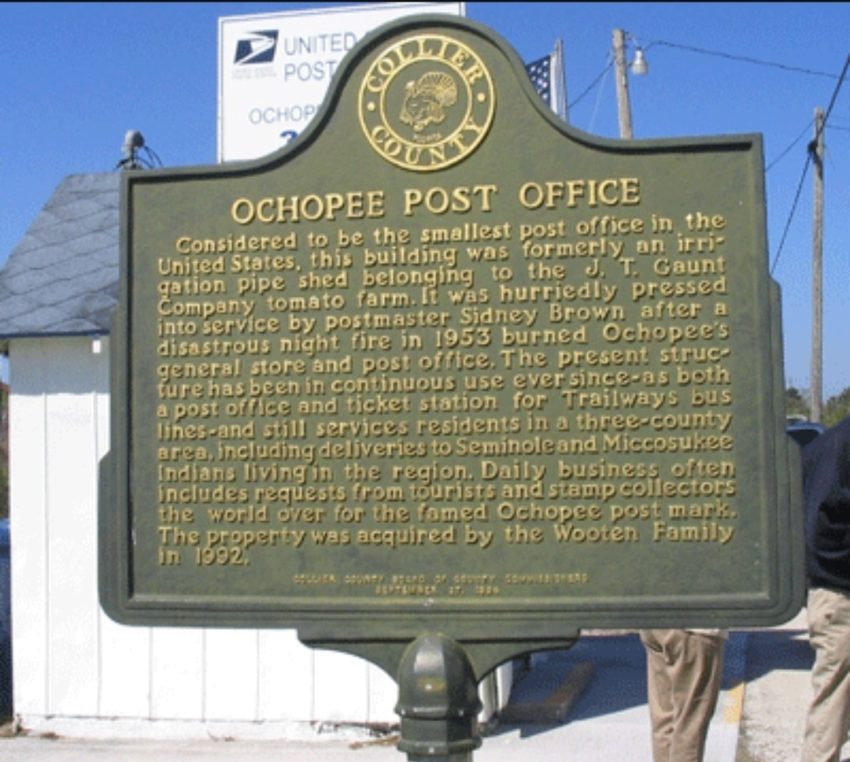
U.S. Post Office
The highest Post Office in the United States is located in Alma, CO (80420), at 10,578 feet above sea level.
million in revenue daily
The Postal Service receives, on average, $217.8 million in revenue each day.
Pony Express
The official name for the Pony Express was the Central Overland California & Pike’s Peak Express Co. Before they were hired, riders had to swear on a Bible not to curse, fight or abuse their animals. The service was in operation only from April 3, 1860, to Oct. 26, 1861. It was never part of the U.S. Postal Service but operated as a contract U.S. Mail route during its final months.
That’s no pony, that’s a big horse
The official name for the “Pony Express” was the Central Overland California & Pike’s Peak Express Co. Before they were hired, riders had to swear on a Bible not to curse, fight or abuse their animals. The service was in operation only from April 3, 1860, to Oct. 26, 1861. It operated as a U.S. Mail route during its final 4 months.
On April 3, 1860, the first Pony Express mail, traveling by horse and rider relay teams, simultaneously leaves St. Joseph, MO, and Sacramento, CA. Ten days later, on April 13, the westbound rider and mail packet completed the 1,800-mile journey and arrived in Sacramento, beating the eastbound packet’s arrival in St. Joseph by two days and setting a new standard for speedy mail delivery. The Pony Express was by far the most effective way to communicate cross-country —until the telegraph came along. After 18 months in operation, the system was shuttered on October 26, 1861, and the last remaining mail was delivered.
The Pony Express National Historic Trail was designated to preserve the story and routes of this nationally significant trail and to support the associated sites that preserve its history. Learn more at https://www.nps.gov/poex
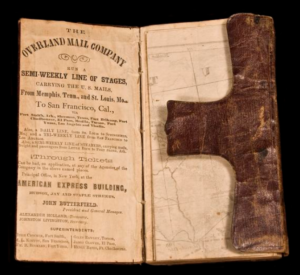
Trademarks
The Sonic Eagle Logo, the trade dress of USPS packaging, the Letter Carrier Uniform and the Postal Truck and the following marks are among the many trademarks owned by the United States Postal Service: Click-N-Ship®, Deliver The Win®, EDDM®, ePostage®, Every Door Direct Mail®, Express Mail®, First-Class™, First-Class Mail®, First-Class Package International Service®, Forever®, Global Express Guaranteed®, IMb®, Informed Delivery®, Intelligent Mail®, Label Broker™, Parcel Select®, P.O. Box™, Post Office®, Pony Express®, Postal Inspection Service™, PostalOne!®, Postal Police®, #PostalProud®, Priority Mail Express International®, Priority Mail Flat Rate®, Priority Mail International®, Priority: You®, Registered Mail™, Standard Mail®, The Postal Store®, United States Postal Inspection Service®, United States Postal Service®, U.S. Mail®, U.S. Postal Inspector™, U.S. Postal Service®, USPS®, USPS BlueEarth®, USPS Mobile®, USPS Operation Santa®, USPS Tracking®, usps.com®, We are people delivering to people™, ZIP+4® and ZIP Code™. This is not a comprehensive list of all Postal Service trademarks.
Non-Postal Trademarks
Dollar General®, Forest Stewardship Council®, How2Recycle®, McDonald’s®, National Dog Bite Prevention Week®, Starbucks®, Subway®, Sustainable Forestry Initiative®, The Climate Registry®.
Postal Facts 2024 provides the public with information about the U.S. Postal Service. The facts in this publication may be reproduced for the purpose of stating the fact itself, in a business, informational or academic context and the like, and in the body of text discussing factual subject matter relevant to the fact being presented. However, these facts may become outdated after publication and seeking the latest information is advised.
Produced by U.S. Postal Service Corporate Communications
© 2024 United States Postal Service. All rights reserved.
© 2016-2025 United States Postal Service. All rights reserved.
Trademarks
The Sonic Eagle Logo, the trade dress of USPS packaging, the Letter Carrier Uniform and the Postal Truck and the following marks are among the many trademarks owned by the United States Postal Service: Click-N-Ship®, Deliver The Win®, EDDM®, ePostage®, Every Door Direct Mail®, Express Mail®, First-Class™, First-Class Mail®, First-Class Package International Service®, Forever®, Global Express Guaranteed®, IMb®, Informed Delivery®, Intelligent Mail®, Label Broker™, Parcel Select®, P.O. Box™, Post Office®, Pony Express®, Postal Inspection Service™, PostalOne!®, Postal Police®, #PostalProud®, Priority Mail Express International®, Priority Mail Flat Rate®, Priority Mail International®, Priority: You®, Registered Mail™, Standard Mail®, The Postal Store®, United States Postal Inspection Service®, United States Postal Service®, U.S. Mail®, U.S. Postal Inspector™, U.S. Postal Service®, USPS®, USPS BlueEarth®, USPS Mobile®, USPS Operation Santa®, USPS Tracking®, usps.com®, We are people delivering to people™, ZIP+4® and ZIP Code™. This is not a comprehensive list of all Postal Service trademarks.
Non-Postal Trademarks
Dollar General®, Forest Stewardship Council®, How2Recycle®, McDonald’s®, National Dog Bite Prevention Week®, Starbucks®, Subway®, Sustainable Forestry Initiative®, The Climate Registry®.
Postal Facts 2024 provides the public with information about the U.S. Postal Service. The facts in this publication may be reproduced for the purpose of stating the fact itself, in a business, informational or academic context and the like, and in the body of text discussing factual subject matter relevant to the fact being presented. However, these facts may become outdated after publication and seeking the latest information is advised.
Produced by U.S. Postal Service Corporate Communications
© 2024 United States Postal Service. All rights reserved.
© 2016-2025 United States Postal Service. All rights reserved.